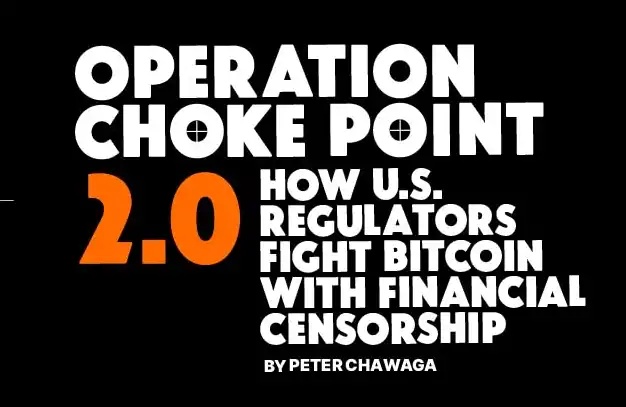From the data on the chain, see the story behind NFT
Written by: 0x21, BlockBeats
Compared to ERC-20Token, the unique attributes of NFT assets make it more liquid and data The visualization of has become difficult. Even for a top project like BAYC, YugaLabs announced the acquisition of CrytpoPunks and Meebits and announced the release of ApeCoin. The floor price has increased from about 60ETH to nearly 100ETH, but the overall number of transactions is only a few dozen. The data The base number is too small, so many players cannot measure the trend of NFT projects through the ERC-20 data standard.
On the other hand, the cultural attributes inherited by NFT integrate the form of "Buidl" in the community. Community activities and members' cohesion have become a project that can Whether it is a necessary condition for success, participating in the community has become a compulsory course for every player. It seems that the data of the NFT market has become invisible. Even quantified data often lags behind community activity and information.
So the data of the NFT market is really not that important?
This article will explore the rules we can see from the two levels of long-term NFT players and short-term NFT players through visualized market data. NFT players should How to use data to match market news and make preliminary judgments on NFT projects.
Short-term activity index
As the NFT market has matured over the past year, the projects on the market have shown a trend of flourishing. According to the Nansen NFT Index, there are nearly 1,600 NFT projects every day It is released in different forms, which also means that players have already escaped the dilemma of "choosing one of the two" a year ago, and have more choices. Short-term investment has also become the primary choice of many NFT players.
Address monitoring of KOL
Short-term investment, that is, trading in a short period of time by buying low and selling high. Free riding is the easiest way to short-term investment. This is why NFT whales like Pranksy make waves every time they make a move.
Take the NFT RaidParty Fighters traded by Pranksy a few days ago as an example:

The data shows that Pranksy frequently traded the NFT project RaidParty Fighters 3 days ago, and the purchase price was around 0.47ETH (do not rule out the Pranksy team buying in advance with other accounts), and the overall transaction cost was 0.5 ETH or so.
We find the corresponding trading volume and average price of the day:


From the data point of view, KOLs such as Pranksy have undoubtedly driven a large number of transactions in the secondary market, and the total transaction volume has peaked in a short period of time. Average prices are also at a short-term trough. The current floor price of RaidParty Fighters is around 0.9ETH, which means that players who take a “free ride” through address monitoring are still profitable in the short term.
The market effect driven by KOL has made many players change their strategy from "looking at long-term value" to "running fast". Changes on the chain caused by some anonymous users other than "free ride" or Smart Money users can still create opportunities for short-term players.
New projects or projects with relatively low floor prices are usually the goals of these users. Such projects are generally relatively small or well-known, and it is difficult to pass information level found. At this time, short-term changes on the chain will become the way for players to discover new items.
Change on the chain
OpenSea's active transaction (Active) interface can update every transaction on the current Ethereum chain in real time, and the sudden "sweeping" phenomenon is a short-term player The earliest information on the chain that can be accessed can also promptly determine whether there are anonymous players who have manipulated the market.
We randomly captured the next NFT project with frequent transactions in the short term in active transactions.

Anonymous users purchased 20 NFT items named Chilled Ape at a cost of 0.023 through the aggregator, causing short-term data fluctuations. At the same time, we found the largest holding address from Nansen to be 40, Then we can easily calculate the cost of the largest holding address, and based on the cost, we can roughly judge whether the project has market manipulation value and potential investment opportunities.

Long term player
Different from short-term investment NFT players, long-term NFT players pay more attention to the future development of the NFT project, and the factors that affect the future value of NFT are also more complicated. The development of the community, the planning of the roadmap, the activity of the community, and whether the NFT project party is continuing to empower and other factors make market data difficult to figure out.
This requires many long-term players to always pay attention to the development of the NFT community to judge its future value, but in fact most players have multiple In the case of NFT, the development of all projects cannot be considered. At this time, the trend of data on the chain and the comparison of data between projects in the cycle can allow players to see some of the rules.
Compared with short-term NFT players, they pay more attention to the floor price, while long-term NFT players pay more attention to transaction volume data (Transaction) and data of individual wallet holders.
Blue Chip NFT
First of all, we use BAYC, Doodles, Clonex and Azuki and other blue-chip projects that have been on sale for more than 3 months, through transaction volume and individual wallet holder data Compare and make preliminary observations.

From the overall transaction volume data, because the entire NFT market is in a downturn, the transaction volume of blue-chip projects in the past month has also shown a downward trend to varying degrees, but the same point The reason is that the transaction volume of blue-chip projects fluctuates significantly. The short-term increase in transaction volume is positively related to the development of the community and the expected value of players.
Take BAYC as an example:

Different from other projects, the transaction volume of BAYC has shown an upward trend in the past month, with the first peak on February 25, because there is news that BAYC#1837 may be passed by Elon Musk MoonPay purchases, leading to a spike in transaction volume for a short period of time.
Since then, due to the overall market downturn, the overall transaction volume of BAYC has dropped to single digits, and the floor price once fell below 70ETH. It went up again for a short period of time, but the community did not release any news, but it is worth noting that there is a divergence between Total Transaction and Unique Buyers in the data, which means that a single wallet address has purchased multiple NFTs. Then the transaction of the day may have shown the behavior of "hoarding goods" in the market.
On March 12th, Yuga Labs, the parent company of BAYC, announced the acquisition of Crypto Punks and Meebits from Larva Labs. The transaction volume of BAYC also reached a recent peak.

The blue-chip project itself has excellent operational capabilities, and can be keenly aware of market trends in the long-term operation process, and control it through community development, good news, or market buying and selling behaviors Trading volume. Therefore, the fluctuation of blue chip projects in the cycle is very obvious, which also represents the excellent operation ability of the community and the relatively mature community consensus.
After the peak, independent holders are still in a state of increasing, which means that the distribution of chips of the NFT project tends to be even, and the big players Small selling pressure presents a relatively healthy state. However, due to the high price and poor liquidity of blue-chip projects, the transaction volume is an important reference target.
Potential high-quality NFT projects
There is a clear gap in transaction volume data between projects at the initial stage of release and projects that have been on sale for a period of time. Part of the reason is that the transaction volume and pending order volume are not stable at the initial stage of project release, especially for NFT projects sold in the form of blind boxes, which usually fluctuate greatly after opening the box, and then show a stable trend, then the transaction volume The fluctuation situation of represents the continuous operation ability of the project to some extent. Take the projects 3Landers and Invisible Friends that have received high attention some time ago as examples.

Compared with the fluctuations in the transaction volume of blue-chip projects, although the floor prices of the two recently released NFT projects are both stable, the transaction volume is quite different.

(3Landers transactions)
3Landers' overall fluctuations are relatively obvious, indicating that the community has the ability to continue to operate and mobilize market sentiment at the initial stage of the sale. Independent holders are showing slow growth.

(Invisible Friends transactions)
In contrast, Invisible Friends fluctuates less. Although the floor price is always around 7ETH, except for singer SnoopDogg In addition to uploading purchase videos on Twitter, which led to a short-term increase in trading volume, the trading volume of Invisible Friends has been in a sluggish state recently, and independent holders have shown a downward trend. This situation does not rule out the situation where the project party or anonymous players maintain the floor price through market behavior.
The floor price of potential high-quality projects is relatively stable and has a continuous upward trend. But the way to maintain the price is the key to measure the potential of the project. To maintain the price through funds and through community building, a preliminary judgment can be made from the transaction volume data and the data of independent holders, which is also a way to judge potential high-quality projects one of the important ways.
Other
As a project that has also received much attention, the data behind Mfer is judged in a completely different way. Mfer, as a MEME form of NFT project itself, is not officially oriented Community activities and trading volume data can reflect the heat or sentiment of the market, and part of the price fluctuations are also due to the manipulation of the market by large positions. Therefore, a more in-depth analysis of the position address is required to have a certain understanding of the trend.

(Mfer transaction status)
The market data behind NFT is not as clear as Defi, but it does reflect the sentiment brought by the market. Focusing on projects from the community is still the basic way to invest in NFT. This article only uses a few indicators behind the data A simple analysis of some NFT projects is provided to support readers to understand the general situation of the secondary market in another way. In the final analysis, NFT is still a series of market behaviors triggered by the community, and pure data-oriented NFT investment still needs more in-depth exploration.
Welcome to join the official BlockBeats community:
Telegram Subscription Group: https://t.me/theblockbeats
Telegram Discussion Group: https://t.me/BlockBeats_App
Official Twitter Account: https://twitter.com/BlockBeatsAsia
 Forum
Forum OPRR
OPRR Finance
Finance
 Specials
Specials
 On-chain Eco
On-chain Eco
 Entry
Entry
 Podcasts
Podcasts
 Data
Data


 Summarized by AI
Summarized by AI






